Models for System Analysis and Design
Info: 7655 words (31 pages) Dissertation
Published: 25th Aug 2021
Tagged: Information Systems
Table of Contents
1.1 Different Systems Lifecycle Models
1.2. Importance of a procedural lifecycle
2.1 Components of a feasibility report
2.2 Impact of different feasibility criteria on a systems investigation
3.1 Undertake a system investigation to meet a business needs
3.2 Appropriate systems analysis tools and techniques
3.3 Documentation to support a system investigation –
3.4 How user and system requirements have been addressed
Figure 8: Various Issues of system investigation
Figure 9: Organisational Structure of Adroit Ads
Figure 11: Context Diagram for our scenario
INTRODUCTION
The process of system analysis and design can be defined as a systematic procedure that is utilised to custom design a system that will be useful for both non-functional and functional needs of a business. The below report discusses the various models for systems development like rapid application development, spiral, agile and waterfall methods. All these methods are described with their implications with respect to the organisation. The procedural development will be analysed in the report with respect to the importance of the different stages that are involved.
The report will then focus on the elements related to feasibility structure such as target audience, outcomes and structure. The report concentrates on the influence of feasibility criteria with respect to systems investigation. The system investigation process along with the suitable tools and techniques will be discussed in the report. Thereafter the documentation related to the investigation will be highlighted in the report. The report analyses the needs of the user with respect to the Sage X3.

(Source: Adroit Ads, 2017)
Task 1
1.1 Different Systems Lifecycle Models – The technical team of the organisation is recommended to put in to practice the models of systems development life cycles to prepare a system for Adroit Ads. These models can be put into practice by laying focus on the available technology, time and money.
SDLC (System Development Life Cycle) Methodology
SDLC is a methodology guide that is generalised in nature and it will support the organisation for the purpose of systems development. It is an essential component of software engineering. SDLC justifies the set of actions that move towards a secure and fast process of development of the system (SDLC models, 2017). It also provides the division of responsibilities in smaller chunks of work operations so as to simplify the process of systems development. All these attributes of SDLC lead to the development of a quality system.
There are many different systems lifecycle models and all of them follow the same S.D.L.C. (system development life cycle). A system it represents a multitude of subsystems which are strongly connected with each other to create a whole. Every subsystem has a unique set of attributes. From all the systems lifecycle models, I choose to present a few of them as follow: waterfall model, V-shaped model, structured evolutionary prototyping model, rapid application model (RAD), incremental model.
1. Waterfall model: It’s the perfect model to describe and to show clearly how exactly works the life cycle in a model, how strong and necessary is the connection between all the steps.
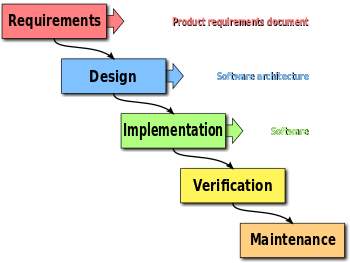
Figure 2: (Smith, 2010)
Now, thanks to this diagram we can visualise and understand that no project start without the necessary requirements and no system works without a proper maintenance. The waterfall model, it’s easy to understand and easy to use, it is right in unexperienced hands because it’s offering a solid structure, good for management control and can be a quality product if the money and time are not an issue.
Though it’s easy to understand and easy to use, it’s not flexible, it’s considered frozen by the end of every stage, nothing can be changed, and most of the times flexibility is a very important criterion in a construction of a system. It can give a false impression of progression and besides, all the requirements must to be clear and known before starting to build. Another minus for the waterfall model – previewing is not possible. Integration can be a problem at the end.
Thus, the waterfall model can be used only in certain situation, when all the requirements are well known and technology is understood. It can be used as a new version for an existing system or porting an existing product to a new platform (UKCBC, 2017).
As I know all the above, especially that it’s not flexible, I can’t take in consideration the waterfall model for my project at Adroit Ads.
2. V-shaped model: This model, it’s similar to waterfall model, each phase must to be complete for the next one to begin, but in addition all the stages are tested in parallel with the implementation. The important thing to mention is that the V-shaped model starts upward beginning with the coding, unlike the waterfall model. For a better understanding of the concept I will use a diagram.
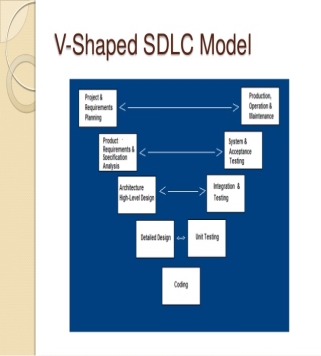
Figure 3: (B., sept. 25 2013)
The V-shaped model is easy to use and all the stages can be tested or verified. Supports flexibility and agility thru all the development process. The progression can be track by milestones.
Evan if it’s flexible, does not easily support the concurrent events, phases or large changes in requirements and does not have a risk analysis activities.
V-shaped model it’s a good choice for hospital systems or clinics particularly for medical devices industry. It also can be used when all requirements, solution, technologies are well known up-front.
Because our project for Adroit Ads it’s large and complex and specially because I don’t know all the requirements up-front, and they may be too specific, I will choose not to use V-shaped model to build the system. To create a system who can fit exactly to our company needs, I must choose a model with more flexibility and capable for major changes.
3. Structured Evolutionary Prototyping model: The main characteristic of this model, is that allow users and customers to view the actual requirements through a prototype system, and being able to change, modify or add more attributes to the system as they consider. This aspect of the model, this capability and flexibility, I consider it the most important aspect of a model. In a system development, we have multiple tasks to develop and complex situations and the flexibility that this model provides makes it the most desirable for medium size projects.
After the users give their feedback, the developers refine the prototype until it reaches the customer expectation. Because of the constant feedback of the users throughout the development process, the final product will meet our unexpected targets and a quick implementation. The contact with the prototype help us find additional needed functionality.
However, despite his good reputation, it may be known as a “quick-and-dirty” methods or abandon of the structured program development in the favour of “code-and-fix” development (Avison D., 2006). And the system can evolve beyond original plans.
The prototyping model can be used when the requirements are not clear or not complete, when the users don’t know how to express their needs, to develop user interface, for short demonstrations. It might take a while for the system to be developed but will allow ease of use and needs minimal training for the end user. Its flexibility gives the opportunity to develop new and original systems being able to fit unexpected requirements in comparison with other models.
For this capacity of prototyping and flexibility, and because the time it’s essential, I recommend to the organisation to use this model for my project at Adroit Ads. The prototyping model is considered efficient in terms of the satisfaction of the required changes as per the client demand and therefore the costs can get reduced.
4. Rapid Application Development model (RAD): It’s the most famous because
Being able to time-box approach the RAD strengths are an advantage for small projects because it’s improving productivity by saving time and using a small team, money are saved as well. With the customer giving feedback throughout the complete cycle we are able to deliver a product that meets the business needs and customer satisfaction.
RAD model has weaknesses as well. Accelerated development process must give quick responses to the user. Hard to use with older systems. It needs a system that can be modularized. Developers and customers must be devoted to rapid activities in a short amount of time.
It can be used when all requirements are well known and when are low technical risks. When the project can be time-boxed and we have a competent team of developers. When the user is involved throughout the life cycle development and the system can be modularized.
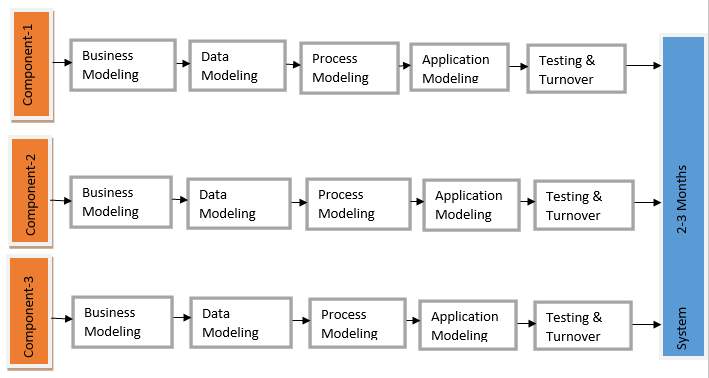
(Naveen, 2017)
5. Incremental model: The incremental model is a method where the product is designed, implemented and tested from the beginning and a little more is added each time until the product is finished. This model looks like a combination between waterfall and prototyping model. The developers create a core which can be used by the customer, and then based on customer requirements, the components will be designed and delivered when complete. This way, the customer is able to partly utilize the system and the development process it’s shorter.
The capability of building the system piece by piece it’s an advantage for the customer, because he can give a feedback for the next stages until the final product. The incremental model uses “divide and conquer” the tasks are divided and produced separately, delivery cost it’s lower, the system delivery is faster customers achieve important functionality early, the risk of requirements to be changed is low.
As expected, incremental model has a few weaknesses: he need a good planning and design, strong module interfaces are necessary, some will be developed before others, the cost of the complete system it might be high. As additional functionality is added to the product, problems may appear related to system architecture which were not obvious in earlier stages.
We can use the incremental model when it’s needed for a complex system in a short amount of time and who can bring faster benefits. Requirements are known but can evolve over time. On projects which have more time for development, on projects who use new technology.
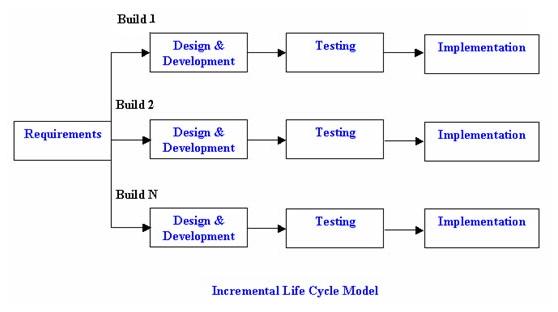
(ISTQB, 2017)
All models are clearly special designed for different situations and different usability. Some, are good for small projects, some for larger ones, some can be developed only in certain situations (V-shaped model), some are very flexible (prototyping model), others very rigid (waterfall model). For my project at Adroit Ads, I will use the prototyping model. I consider it the proper one for the amount of time that I have and being able to create a prototype will allow me to receive a more accurate requirement, feedback and also will help the end users to give their best ideas for making their work easier and faster in the same time.
1.2. Importance of a procedural lifecycle – The system life cycle is a process of planning, analysis, design, development, testing, implementation, review and maintenance. A cycle which is the base of all the system models. All the stages involved in the systems development lifecycles have their own purpose and importance and they help to enhance the cost effectiveness and customer satisfaction. The lifecycle models of systems development involve basically five stages but if I take a deeper look, they can be seven.
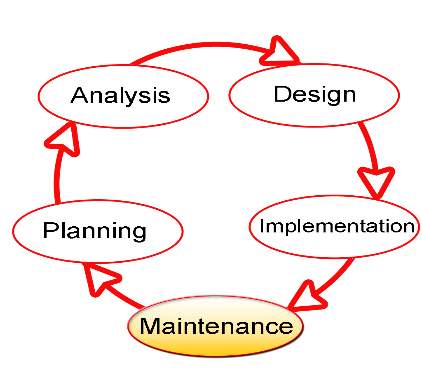
(Dzonatas, 13 july 2008)
The planning process- it can be translated as requirements identification. Before starting anything, I need to know exactly what are the requirements for the system I make. For our project, I will build a new system, and to understand the requirements I need to talk with the users, to identify what are their needs. To discuss about functional or non-functional requirements. Adroit Ads has to planthe process of systems development before starting the work operations so as to make sure that the possibility of flaws in the end product reduces. Another important aspect of this stage is the analysis of data processing tools, systems, and internal arrangement which helps in the determination of shortcomings in these areas.
The analysis process- it is composed by multiple stages and the first one is feasibility study, very important step which have three aspects to study: technical, financial and operational. All this aspects are close connected and the result will tell if it’s worth to start the system or not. Technical includes the computers and infrastructure, financial includes the cost, initial cost for the project and maintenance cost, also to have a good perception about benefits on long term and short term, operational to see if the system it’s proper for the business needs. In the end, I do a feasibility report and presenting to Mr Brown explaining each important step and coming up with solutions, to build the system in-house which the cost will be higher or to give the alternative for an outsource system. Depends on how big it’s the project, in our case I will do it in-house because of the complexity, meeting the requirements. In the analysis process, I analyse the existing system as well and the technical book where it’s needed.
For the system design– I present 3 types: a) functional design, b) structural design, c) dynamic design.
The a) design, known as the logical design. I choose to explain this thru a graphic of the data flows, about input and output of the system.
The b) design, it’s also called the architectural design in which I present and describe the structure of the system and how it works using a diagram or a framework showing the strong and the weak points of the system.
The c) design or the physical design it’s concentrated in practical tasks, like User Interface design, Data design and Process design. I explain how users add information in the system and how the system send information back to them, I show how the data is represented and stored within the data base and how data is processed through the system.
System development– it’s the practical part where I choose the technical instruments (computers), and the best programmers to start coding with me.
The next step is testing the system- Testing it’s a very important step in the process of any system construction, it’s an evaluation of the product we create. Testers evaluate if the system was created in its specified requirements, if the software is compatible with all the existing hardware, they will detect any imperfection or errors within the system or in the system as a whole.
For the implementation– I can choose between 3 steps: direct, parallel or step by step. The direct step is changing all the old system with the new one. The parallel step presumes to work in parallel (as the name says) with the older system and the step by step change option, is replacing the older system piece by piece. For our project, to create a solid system I choose to use the direct option. Because the older systems Adroit Ads had, are not connected between and not consistent. In this phase the needs regarding changes in the approaches, structure and environment of the workplace can be identified. This stage of software development provides assurance to the client with respect to adaptable and tested system software.
The last step but not less important is review and maintenance– Involves checking, changing, fixing the errors and ensure that it works in the parameters required by the Adroit Ads meeting their needs over the time.
Well, the planning stage it’s very important for the future system. I have to spend a lot of time to collect all the information, all the requirements and the best way to do it, is by observing how they use the older system, their main work, and discussing with Mr. Brown. To make a step forward I have to conduct a feasibility study, which will be complex but will bring evidence of financial and technical situations. Then I will design the system on paper and computer to visualise and create an image of all requirements. The coding it’s a time consumer where I need to create a team for the actual development. Most of the times it’s not going smooth because of the errors that may occur. After the coding, it’s done I will test the system to see if it’s working as expected and in the terms that I have from the requirements and the feedback from end users. Implementation is one of the most vital phases, now it’s time to install the system and to train users. In the last step I need to maintain the system to work perfectly for the porpoise that has been created.
In order to create a well functional and solid system, I think it is very important to follow all the steps because there is a close connection between them and a necessity to follow the next step and the next one or 2 in the same time as some of the model’s system do, but to miss a step is a sure way to failure or to a more complicated future of the system. Actually, all these steps are logically following one after another, every small step it brings you a result. The result of our project must to be perfection, strong and to make the employers job easier, so that Mr Brown can win the award this year.
Task 2
2.1 Components of a feasibility report – The feasibility study is a process of analysis. The report will be able to bring evidence if it’s worth to build the system inhouse or outsource or just to continue with the older systems, also will clarify the financial feasibility, market and the technical tools. The feasibility study is conducted to identify and choose the best system that meets performance requirements. It is necessary for every organization to develop and maintain the feasible report for making improvements in the system. Adroit Ads is to perform and design suitable policies for the efficiency in the departments for maintaining the operative functions of the HR and payroll system. There are different components of the report to result the specific outputs for working of the systems of the organization. In my report, I will highlight the most important components as follow:
Aim of the project: The report is presented to present the criteria of the objective and aim of the organization coordinated with the research made on the feasibility study. The main aim of the organization is to present a clear view of sharing the information as well as using effective modes of communication for exchanging the data within the organization (Willcocks, 2013). This report is presented to estimate the suitable process for improving the management of HR department as well as framing the payroll system for effective productivity. Aim of the project should be mentioned in the report to replace the traditional systems into transformed and dynamic systems of the organization. This will have a big impact on helping Mr. Brown to win the 2017 award.
Structure: Organization resources are framed according to the benefits for improving the benefits of the systems. In order to maintain a suitable structure it is necessary for the organization to frame policies and plans to improve the rules and practices of the feasibility study. Aim of the organization depends upon identifying the needs of the system users as well to reach the effective goal of the organization to increase productivity (Venkatesh et.al.2013). Strategies of the organization must base on carrying the policy of cost effectiveness for proper utilization of budget, time and effort of the organization. This report must present different activities of the feasibility study along with the effective technical activities for managing the elements of the study.
Target users: It is must for the organization to identify the needs of the users of the system to present the effective output. Management of the organization must direct the users that include different customers, technical staff, HR managers and those departments that are interlinked with the systems to achieve the objectives of the organization. This report must present the identified needs of the users to be used efficiently for improving the efficiency in the organization. Needs of the users along with the industrial business and responsibility of the workforce must be presented in the report with suitable format. Individual performances of the employees and the entire workforce will enhance the efficiency and productivity of the organization.
Results: This component of the report consists of the result of the feasibility study. It is suitable for the organization to evaluate and mention the necessary outcomes of the organization in order to create the robustness and accessibility in the systems for the users. Organization must ensure that the outcomes are based on increasing the efficiency in the operational activities of the HR department and enhancing payroll systems (Bonczek et.al.2014). Replacing the traditional systems with the transformed system will result in producing effective outcomes with the use of Sage X3 ERP system.
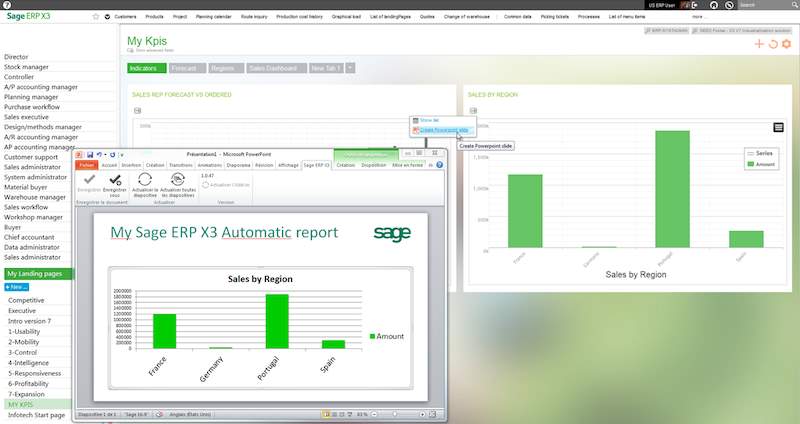
(Source: Sage ERP system, 2017)
2.2 Impact of different feasibility criteria on a systems investigation – Feasibility study and criteria of the components of the report influence the working and efficiency in the systems. There are some of the factors that affect the capability of the system to produce the quality in outcome. Therefore, some of the issues are mentioned below:
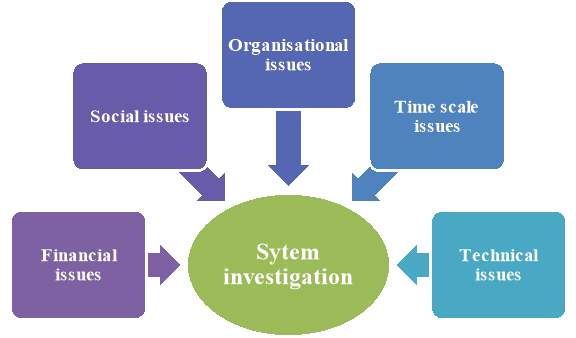
Figure 8: Various Issues of system investigation
Financial issues: It is necessary for the organisation to identify the economic factors affecting the working of the system. Adroit Aids is the organisation that needs huge investments for the process of making improvements in the system. Economic factors include low investment, recession period, and limitation to acquire benefits that will directly affect the efficiency of the systems (Lehmann and Joseph, 2015). However, with the help of risk analysis organisation can identify the measure to control the risk of the organisation. Cost effective policy will ensure in producing effective outcomes for achievement of organisational goal.
Social issues: Adroit ads have the working criteria with the performance of the respective employees as well as entire team. Therefore, the working background, values, personal disputes affect the working of the system. With the implementation of different strategies associated with the role and responsibility of the employees must be communicated during meetings to overcome the conflicts in the work.
Organisational Issues: With emerging market and competition in the global market, it is necessary for the organisation to identify the competitive leaders. This is resolved through the effective technique of the motivation, as well as technical improvements in the machinery will improve the individual performances of the employees (Cambero and Sowlati, 2014). Organisational issues that are affecting the work of the employees must be coordinated by effective manger to bring the suitable changes in the work along with increasing efficiency.
Time scale issues: Adroit ads apply the specific technique for scheduling the activities of improving the efficiency in the organisation. Therefore, it is necessary to organisation to organise different meeting and conferences to discuss about the changes before implementing the changes in the system (Eykhoff, 2014). Daily work is to be monitored by the manager to increase the performances of the individuals as well as entire staff. Therefore, the organisation has to identify the standards causing deviations and take necessary decisions regarding the same.
Technical issues: Adroit Aids use the suitable technology and mechanised means for the means of production but the rise of technology affect the outcomes of the system (Harper, 2015). Therefore, the organisation has to identify the optimum utilization of resources to handle the amount of data present in the systems for effective output. Proper implementation of training and development programmes will increase the knowledge and skills of the technical staff working in the organisation.
Task 3
3.1 Undertake a system investigation to meet a business needs – Organization can undertake the system investigation to meet the requirements related to HR and payroll management system. System investigation can consider the following stages:
Stakeholders
Organization has to determine the key stakeholders those are participating the investigation process. Organizational employees like creative team members and directors, account manager and human resource managers are key stakeholders for investigation related to new system for centralised control and management of information.
Requirement identification and gathering
Requirement of the organization is to determine the system which can offer the centralised data management and communication for the employees working in various departments (Chang, 2016). System is also required to use the data for the functional as well as non-functional requirements associated with system to attain a trustworthy system.
Requirement specification
This section specifies Scope of the system to bring efficiency in the system along fulfilling the needs of the users. This process is also concerned with measuring the inputs in the form of suitable resources with the adaptation of the policy of cost effectiveness. This section also follows the suitable outputs after the process of system investigation as well as the suitable methods used in the process of system investigation.
Consideration of alternative solutions
There are different ways to make necessary changes in the information systems. Similarly, Adroit Aid use specific commercial system like Sage X3 to perform the efficiency in the needs of the business as well as to meet the needs of the users (Gorla and Somers 2014). The solution to use the effective use of Sage X3 will result in increasing the actual performances of the systems.
Quality assurance
It is must for the organisation to produce the outcome of the system in qualitative manner after the process of identifying the needs of the users. The support of Sage X3 will help in producing effective quality as well as helping support the departments of HR and payroll system.
3.2 Appropriate systems analysis tools and techniques – The organisation can get the help of the tools related to the system analysis and design so as to simplify the procedure of the process of investigation (He et al, 2012). The significant tools for the process are as follows:
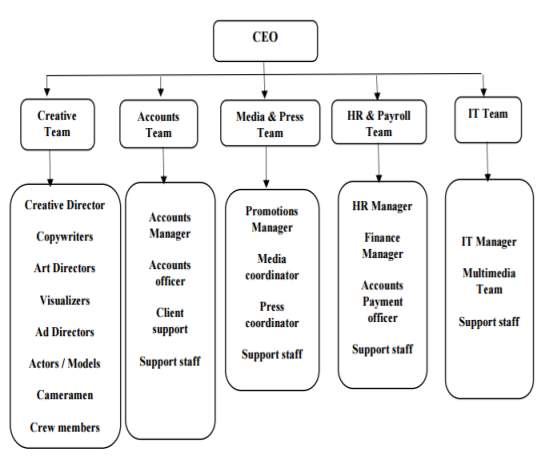
Figure 9: Organisational Structure of Adroit Ads
(Source: Organisational Structure of Adroit Ads, 2017)
Total Quality Management: is utilised for the purpose of quality assurance. The organisation requires a system that is highly capable to satisfy the functional needs of communication, HR and payroll along with the control of user accessibility and sharing of functions. The considerations of quality management also involve the systems investigation that is to be satisfied within time and cost provided for the purpose. This will result in the satisfaction of the demands of the client.
Entity Relationship Diagram: The entity relationship diagram depicts the real-world objects such as the director, adverts, client as well as managers that depend on one another for the achievement of a mutual goal. The types in the diagram represent the relationship among the entities. The relationship of one entity is possible with multiple entities in other tables of management of data. For an instance: the table of client is developed for the management of entities like the phone numbers, address, and names etc. on the other hand, the primary data related to the client number is utilised for the purpose of fetching of the data from bids. That is how there is a utility for offering of the connectivity of entities.

(Source: Entity Relationship Diagram, 2017)
Context Diagram: Adroit Ads is responsible for the presentation of the contexts regarding the issues that are being faced by the organisation. These contexts will help in the identification of system design (Highsmith, 2013). Adroit Ads has stated that due to the utilisation of standalone system the organisation is facing problems regarding the communication practices prevalent in the workplace and also the issues regarding the management of finances and human resources are being faced by the organisation. The context of the problem is the connection among the clients, finance manager as well as the creative team.
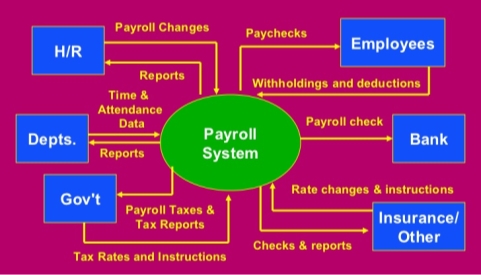
Figure 11: Context Diagram for our scenario
(Source: Context Diagram, 2017)
Business System Options: or BSO can be defined as a set of substitute options for the purpose of fulfilment of the identification of solutions to the problems to the organisation. Adroit Ads is recommended to update the system of the current standalone systems for the purpose of accountancy and data sharing and accountancy so as to make new arrangements for satisfaction of requirements. The restrictions of Adroit Ads facilitate the development of BSO.
Data Flow Diagram: The diagram for data flow in the organisation depicts the flow of data from one user to other user along with the processing of data with the help of the system. The communication practices as well as the flow of information has to be efficiently depicted in the data flow diagram so as to make sure that there is suitable connectivity and access to required information for the user. The tool of data flow diagram is very helpful for the generalisation of the control over information. The development of multiple levels is advised in the flowchart for the purpose of representation of the problem.

(Source: Diagram for Data Flow, 2017)
Technical Systems Options: The tools of technical systems options can be utilised for the determination of the system that has technical possibilities regarding the satisfaction of organisation needs (Davis, 2014). One Business System Option cannot be suitable for the technical system option due to the realistic approach of it. Adroit Ads has to focus on the system that has technical potential for the satisfaction of the needs of the accounts department as well as the management in order to save time and money.
3.3 Documentation to support a system investigation – The outcomes and practices of the systems investigation have to be suitably documented as per the required changes as well as reviews of the data that is available. The documentation for Adroit Ads will be as follows:
Background Information: Adroit Ads is providing the service regarding the online advertising as well as the provision of service in the international markets. Adroit Ads is currently lacking the capability to provide the flow of information among the accounts department and the creative team (Almajed, 2013). For this purpose, the organisation has to develop a system for the payroll as well as the managerial operations for the purpose of delivery of adverts to customers efficiently.
Problem Statement: Adroit Ads has to develop a data sharing system with the monitoring of the data. This will help in the processing of the advertisement client and delivery of the advertisement efficiently.
Summary and Data Collection Process:
– Interview: The individuals related to the advertisements have to be interviewed for the purpose of determination of needs of the customers.
– Questionnaire: The requirements of the concerned individuals can be determined with the help of questionnaires.
– Observations: The activities of the concerned individuals can be observed for the identification of their demands.
Recommendation
– The creative director has to be engaged in the designing phase of the system development life cycle so as to ensure the fulfilment of the requirements of Adroit Ads.
– There is a requirement of quality checks on all stages of systems development life cycle so as to ensure satisfaction of the client.
3.4 How user and system requirements have been addressed – The process of system investigation has the utility for the identification of the needs of the organisation for the system in order to simplify the data sharing (Miles, 2015). The following points can be focused on to address the requirements of the system:
Cost: The costing of the process of systems investigation has to be considered for the process of systems development so as to clarify client requirement modularise work operations as well as assign the roles and responsibilities. The optimisation of overall costing of the project is useful for the satisfaction of client requirements.
Policy: The process of design and analysis of system development has to be developed as per the organisational policies of Adroit Ads. There should not be any disputes regarding responsibility distribution and no compromise in the gathering of information.
Legacy Systems: The cost of system development can be reduced with the help of existing computer systems available with the organisation. This is a highly effective approach as the organization has computer systems of Standalone.
CONCLUSION
The above report has been assessed as per the system analysis and design for Adroit Ads and it has stated that there is a lot of importance for the organisation. The process of business can be optimised with the help of systems development and the demands of the client can be met. The report started with an explanation of the systems development life cycle such as V-shaped model, structured evolutionary prototyping model, rapid application development model, waterfall method and incremental model. These models have been discussed as per the requirements of the organisation. Thereafter the report has analysed the elements of a feasibility report and the influence of feasibility criteria on the systems development process and design and investigation for Adroit Ads. The report has also investigated the use of tools and techniques for the systems development process for the organisation. The results of the systems development and the user requirements along with client satisfaction have lastly been discussed in the report. If the CEO agrees with this approach and pursue to action, I think that the system will help improving the business and will bring the much-desired award for 2017.
References
Books and Journals
Bonczek, R.H., Holsapple, C.W. and Whinston, A.B., 2014. Foundations of decision support systems. Academic Press.
Cambero, C. and Sowlati, T., 2014. Assessment and optimization of forest biomass supply chains from economic, social and environmental perspectives–A review of literature. Renewable and Sustainable Energy Reviews, 36, pp.62-73.
Chang, J.F., 2016. Business process management systems: strategy and implementation. CRC Press.
Eykhoff, P. ed., 2014. Trends and progress in system identification: IFAC Series for Graduates, Research Workers & Practising Engineers (Vol. 1). Elsevier.
Gorla, N. and Somers, T.M., 2014. The impact of IT outsourcing on information systems success. Information & Management, 51(3), pp.320-335.
Harper, C., 2015. Organizations: Structures, processes and outcomes. Routledge.
Lehmann, J. and Joseph, S. eds., 2015. Biochar for environmental management: science, technology and implementation. Routledge.
Macaulay, L.A., 2012. Requirements engineering. Springer Science & Business Media.
Mall, R., 2014. Fundamentals of software engineering. PHI Learning Pvt. Ltd..
Miles, L.D., 2015. Techniques of value analysis and engineering. Miles Value Foundation.
Venkatesh, V., Brown, S.A. and Bala, H., 2013. Bridging the qualitative-quantitative divide: Guidelines for conducting mixed methods research in information systems. MIS quarterly, 37(1), pp.21-54.
Willcocks, L., 2013. Information management: the evaluation of information systems investments. Springer.
Davis, K., 2014. Different stakeholder groups and their perceptions of project success. International Journal of Project Management, 32(2), pp.189-201.
De Lemos, R., Giese, H., Müller, H.A., Shaw, M., Andersson, J., Litoiu, M., Schmerl, B., Tamura, G., Villegas, N.M., Vogel, T. and Weyns, D., 2013. Software engineering for self-adaptive systems: A second research roadmap. In Software Engineering for Self-Adaptive Systems II (pp. 1-32). Springer Berlin Heidelberg.
He, Z., Shu, F., Yang, Y., Li, M. and Wang, Q., 2012. An investigation on the feasibility of cross-project defect prediction. Automated Software Engineering, 19(2), pp.167-199.
Highsmith, J., 2013. Adaptive software development: a collaborative approach to managing complex systems. Addison-Wesley.
Katina, P.F., Keating, C.B. and Ra’ed, M.J., 2014. System requirements engineering in complex situations. Requirements Engineering, 19(1), pp.45-62.
Almajed, A.I. and Mayhew, P., 2013. An investigation of the critical success factors of IT projects in Saudi Arabian public organizations. IBIMA Business Review, 2013, p.1.
Almajed, A. a. M. P., 2013. An investigation of the critical success factors of IT projects in Saudi Arabian public organizations. 2013 ed. s.l.:IBIMA business review.
Avison D., F. G., 2006. Information Systems Development Methodologies, techniques & tools. 4th edition ed. UK: McGraw Hill.
Online
SDLC models and benefits, 2017 [Online] [Accessed Through]
SDLC models, 2017 [Online] [Accessed Through]
B., J., sept. 25 2013. Slideshare. [Online]
Available at: Jayesh B. (Sep 25, 2013), S.D.L.C (Software Developmehttps://www.slideshare.net/jayeshbuwa/sdl-26563180
[Accessed 6 april 2017].
Dzonatas, 13 july 2008. Wikimedia Commons. [Online]
Available at: Dzonatas from Wikimedia Commons (13 July 2008), Systems Development Life Cycle – Maintenance bubble highlighted. [ohttps://commons.wikimedia.org/wiki/File:SDLC-Maintenance-Highlighted.png
[Accessed 10 april 2017].
ISTQB, 2017. ISTQB EXAM CERTIFICATION. [Online]
Available at: http://istqbexamcertification.com/?s=incremental+model
[Accessed 28 april 2017].
Naveen, 2017. TESTINGFREAK. [Online]
Available at: http://testingfreak.com/rad-model-software-testing-advantages-disadvantages-rad-model/
[Accessed 3 April 2017].
Smith, P. K. /. P., 2010. wikipedia. [Online]
Available at: https://en.wikipedia.org/wiki/Waterfall_model#/media/File:Waterfall_model.svg
[Accessed 05 April 2017].
UKCBC, 2017. ULearn. [Online]
Available at: https://ulearn.ukcbc.ac.uk/course/view.php?id=111
[Accessed 05 april 2017].
Cite This Work
To export a reference to this article please select a referencing stye below:
Related Services
View allRelated Content
All TagsContent relating to: "Information Systems"
Information Systems relates to systems that allow people and businesses to handle and use data in a multitude of ways. Information Systems can assist you in processing and filtering data, and can be used in many different environments.
Related Articles
DMCA / Removal Request
If you are the original writer of this dissertation and no longer wish to have your work published on the UKDiss.com website then please:




